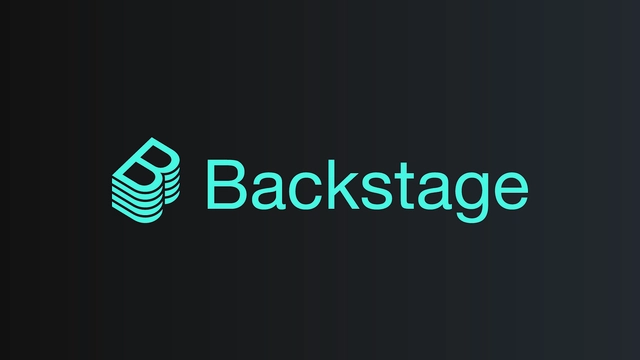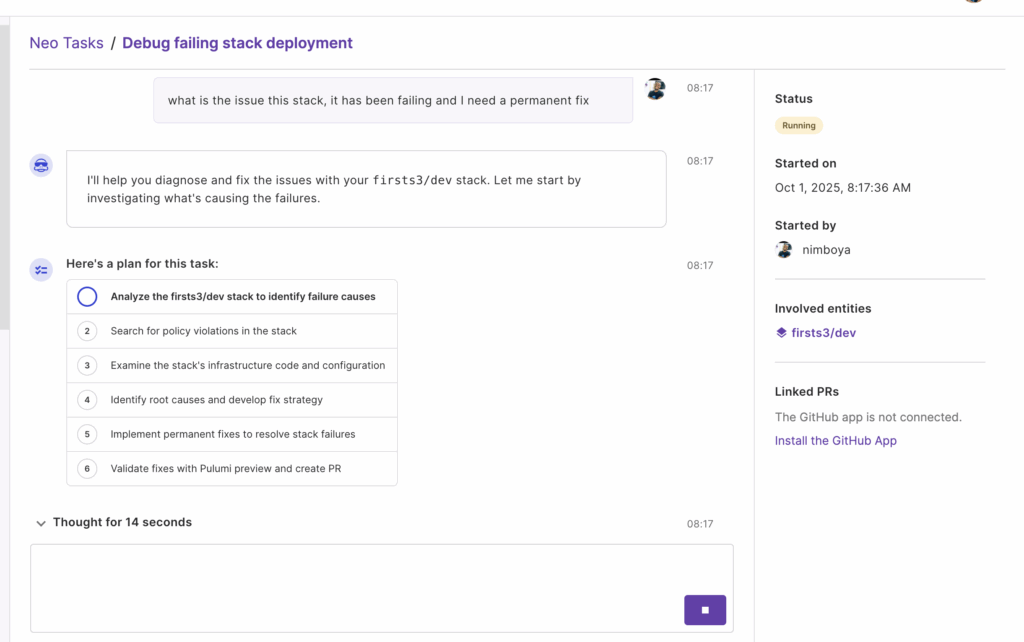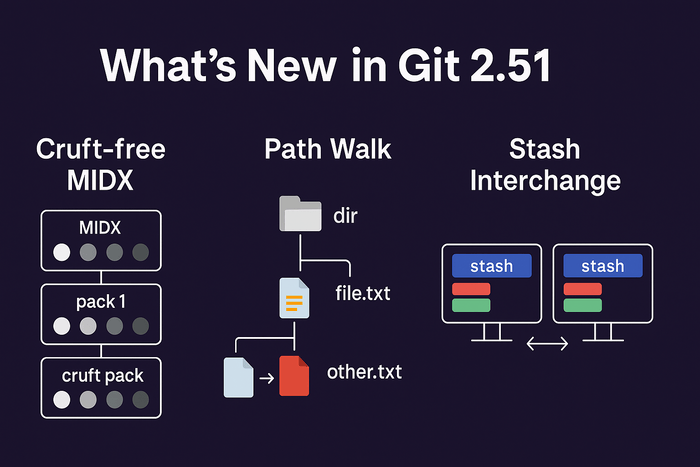In the world of software development, managing internal tools, documentation, and services efficiently can be a daunting task.
This is where Backstage, an open-source platform created by Spotify, steps in. It helps developers streamline their workflow, manage services, and improve collaboration within engineering teams.
In this article, we’ll dive deep into what Backstage is, its core features, how it works, and why it’s gaining traction among DevOps and engineering teams.
I wrote an article previously that explains how platform engineering can be implemented without the need of a UI like Backstage.
What is Backstage?
Backstage is an open-source developer portal designed to centralize infrastructure tools, documentation, and services in one place. Initially built by Spotify to manage its internal developer ecosystem, it was later open-sourced and is now backed by the Cloud Native Computing Foundation (CNCF).
Key Features of Backstage
Service Catalog – Helps track and manage all software components.
Software Templates – Automates the creation of new services.
TechDocs – Centralizes documentation for easy access.
Plugins – Extendable features for integration with other tools.
API Management – Facilitates efficient API documentation and governance.
How Backstage Works
Core Components
Service Catalog – Provides an organized way to register and maintain ownership of microservices.
Software Templates – Automates boilerplate code generation.
TechDocs – Uses Markdown-based documentation stored with the code.
Plugins – Customizable and extendable components that add functionalities like Kubernetes monitoring, CI/CD integration, and more.
Integration with Existing Tools
Backstage integrates smoothly with a wide range of DevOps tools, making it a central hub for managing software development. It connects with Kubernetes for service discovery and monitoring, ensuring your applications are running smoothly. For continuous integration and deployment (CI/CD), it works with tools like Jenkins and GitHub Actions, automating the build and release process. Backstage also ties into observability platforms like Grafana and Prometheus, providing insights into system performance and health. Additionally, it supports popular source code management systems such as GitHub, GitLab, and Bitbucket, making it easier to manage and track code changes. This seamless integration simplifies workflows and boosts productivity for development teams.
Benefits of Using Backstage
Backstage is revolutionizing the way teams manage and develop software by offering a suite of powerful features designed to streamline workflows and enhance productivity. One of its key strengths is its ability to standardize practices across teams. By providing a unified platform for managing services, Backstage ensures that all teams follow consistent development practices, reducing confusion and fostering better collaboration. This standardization is particularly valuable in large organizations where different teams might otherwise adopt varying approaches, leading to inefficiencies and miscommunication.
Another major advantage of Backstage is its ability to improve developer productivity. With a centralized portal, developers no longer need to waste time searching for documentation, tools, or services. Everything they need is accessible in one place, allowing them to focus more on coding and less on navigating complex systems. This centralized approach not only speeds up development but also reduces frustration, making the development process smoother and more enjoyable.
Backstage also promotes enhanced service ownership. Teams gain a clear, comprehensive overview of their services, including dependencies and documentation. This transparency enables teams to take full responsibility for their services, leading to better maintenance and accountability. When teams have a complete understanding of their services, they are better equipped to identify and resolve issues quickly, ensuring higher reliability and performance.
The platform’s extensibility is another standout feature. Backstage’s plugin system allows teams to customize the platform to meet their specific needs. Whether it’s integrating with existing tools, adding new functionalities, or tailoring the user interface, the plugin system makes Backstage a highly versatile tool that can adapt to the unique requirements of any organization. This flexibility ensures that Backstage remains relevant and useful as teams grow and their needs evolve.
Finally, Backstage excels in API management. Developers can easily document, track, and manage APIs within the platform, ensuring smooth collaboration and integration across teams.
This capability is crucial for maintaining clear communication and reducing errors when multiple teams are working on interconnected systems. By simplifying API management, Backstage helps teams work more efficiently and effectively, ultimately leading to faster and more reliable software delivery.
Use Cases of Backstage
1. Managing Microservices: Large-scale organizations with multiple microservices can efficiently track, update, and maintain their services using Backstage’s Service Catalog.
2. Onboarding New Developers: New engineers can quickly get started with standardized templates, documentation, and tools.
3. Automating Service Creation: Teams can generate new services with predefined templates, reducing manual effort.
4. API Governance: Backstage helps in maintaining API documentation, monitoring usage, and ensuring compliance.
5. Observability & Monitoring: With integrations like Grafana and Prometheus, developers can monitor service performance from a single dashboard.
Challenges of Using Backstage
While Backstage offers numerous benefits as a developer portal, it also comes with its own set of challenges that organizations need to consider. One of the primary hurdles is the initial setup complexity. Setting up Backstage requires a solid understanding of technologies like Kubernetes for service orchestration, CI/CD tools for automation, and service management for organizing and maintaining various components. For teams without prior experience in these areas, this can be a significant barrier to entry, requiring additional training or hiring specialized talent to get started.
Another challenge is the maintenance overhead. Since Backstage is an open-source tool, organizations are responsible for maintaining, customizing, and extending it to meet their specific needs. This often requires dedicated teams to manage updates, troubleshoot issues, and develop custom plugins or integrations. While the open-source nature of Backstage provides flexibility, it also means that organizations must invest time and resources to ensure the platform remains functional and aligned with their evolving requirements.
Additionally, there is a learning curve associated with Backstage. Developers need to familiarize themselves with various aspects of the platform, such as YAML configurations for defining services, plugins for extending functionality, and integrations with other tools in the DevOps ecosystem. This can take time and effort, especially for teams transitioning from simpler or less integrated systems. However, once the initial learning phase is overcome, the platform’s ability to centralize and streamline workflows can significantly boost productivity and collaboration.
Despite these challenges, many organizations find that the long-term benefits of Backstage—such as improved engineering efficiency, better visibility into services, and enhanced developer experience—make it a worthwhile investment. By addressing the initial setup complexity, allocating resources for maintenance, and supporting teams through the learning process, organizations can unlock the full potential of Backstage and create a more efficient and cohesive development environment.
Future of Backstage
Backstage is experiencing a surge in adoption as more companies recognize its value as a central developer portal, helping to improve engineering efficiency and streamline development processes. By providing a unified platform for managing tools, services, and documentation, Backstage reduces friction and empowers teams to focus on building software rather than navigating complex workflows.
With the strong backing of the Cloud Native Computing Foundation (CNCF), the Backstage ecosystem is growing rapidly, with a steady influx of new plugins and integrations that enhance its functionality and compatibility with a wide range of tools. This continuous expansion ensures that Backstage remains adaptable to the evolving needs of modern development teams.
Beyond its core DevOps capabilities, Backstage is evolving to address broader challenges in software development. It is increasingly being used to support AI-driven analytics, enabling teams to gain deeper insights into their systems and make data-informed decisions.
Additionally, Backstage is being leveraged for security governance, helping organizations enforce compliance and manage risks more effectively.
On top of that, it is expanding into enterprise-level automation, simplifying complex workflows and enabling large-scale organizations to operate more efficiently. These advancements highlight Backstage’s versatility and its potential to become a comprehensive solution for engineering teams across industries.
As Backstage continues to mature, its future looks incredibly promising. Its ability to integrate with a wide array of tools, combined with its expanding feature set, makes it a powerful platform for fostering collaboration, innovation, and productivity.
Whether it’s through improving developer experience, enabling advanced analytics, or supporting enterprise automation, Backstage is poised to play a key role in shaping the future of software development.
With ongoing contributions from the open-source community and support from CNCF, Backstage is well on its way to becoming an indispensable tool for engineering teams worldwide.
Conclusion
Backstage is transforming the way organizations manage internal developer tools, documentation, and services. With its open-source flexibility, extensibility through plugins, and robust service catalog, it’s becoming a must-have for modern engineering teams.
While the setup might seem challenging at first, the long-term benefits far outweigh the initial efforts. If your team struggles with service management and documentation, Backstage might be the perfect solution!






